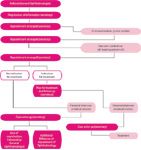Introducing anti-VEGF therapy in practice: a Danish perspective
The introduction of anti-VEGF therapy has revolutionized the treatment of neovascular age-related macular degeneration (AMD); the main cause of blindness in the industrialized world. Large numbers of previously untreatable patients will now be eligible for treatment which, in itself, represents an overwhelming challenge to healthcare providers. Discussion and careful planning is needed to ensure that the manpower and funds are in place to deal with this new era in ophthalmic care.

Danish restructuring adds pressure to ophthalmic clinics
This year, in Denmark, we have experienced a minor administrative revolution. Fourteen counties have been replaced by five administrative regions, of which one is the North Jutland Region, populated by more than 750,000 inhabitants. At the same time, the National Board of Health has been given greater authority with the purpose of unifying the treatment of various disorders including the treatment of AMD with anti-VEGF therapy. The Board recently decided that the new anti-VEGF treatments should be considered as a function of evolution and should therefore only be provided at one department in each region. This means that we find ourselves in a situation where each AMD treatment centre has an estimated population of between 750,000 and 1,500,000 people. Such a large population demands careful organization.
Since the 21st July 2006, we have been administering intravitreal anti-VEGF therapy to all subjects with neovascular AMD at our hospital. The treatment programme consists of anti-VEGF injections every fifth week over the course of three sessions followed by monthly examinations and, if necessary, re-treatments. We receive approximately fifteen patients each week who are candidates for the treatment and, in my experience, each patient requires eight or nine treatments over a one-year period. The number of patients assigned to anti-VEGF therapy is therefore constantly growing.
Organization & planning is key

Currently, the anti-VEGF treatment programme includes doctors, nurses, photographers and secretaries. Since the interpretation of angiography is known to vary, we meet to decide which patients require treatment. These patients are then called back to discuss the treatment and, if they wish to proceed, begin the treatment process.
